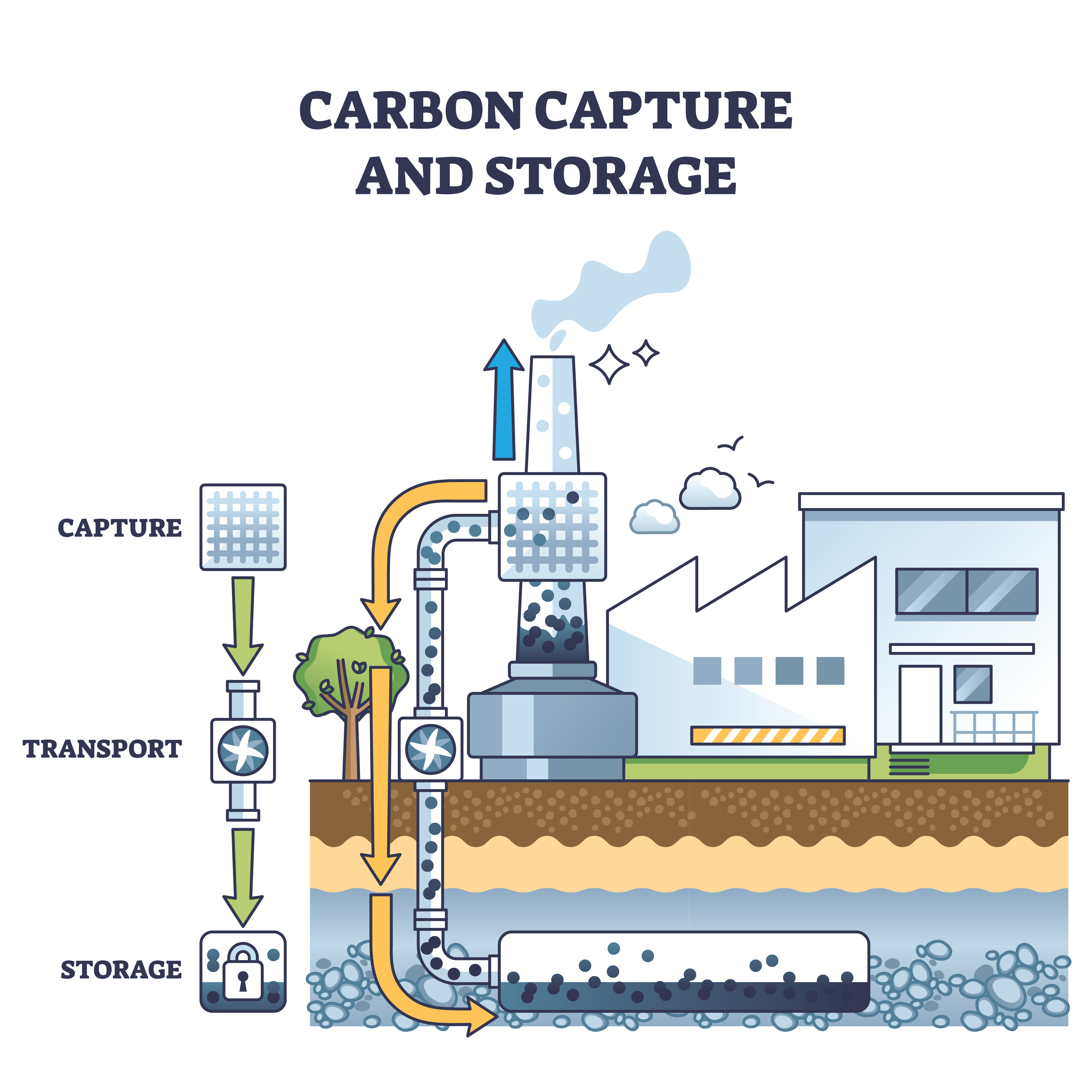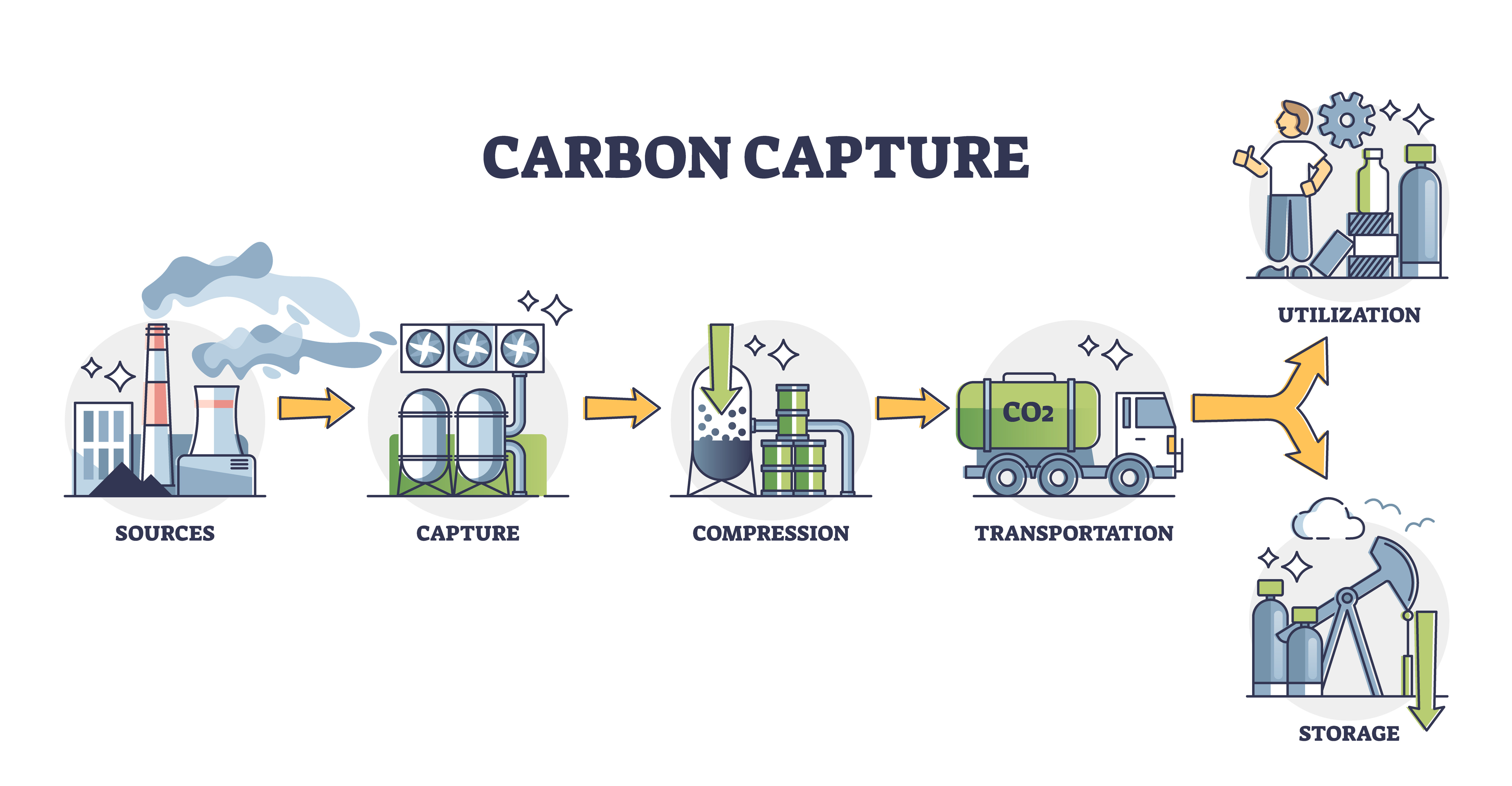The Simple Guide to Carbon Sequestration, A Natural Solution for Businesses
Preventing the earth’s atmosphere from warming any further is a massive collective effort. From ending our reliance on carbon-emitting fuels to establishing legally binding net-zero emissions targets by 2050, every solution matters in the fight against unprecedented climate change.
While transitioning to clean energy and decarbonizing high-emission industries like construction and transport are essential, humankind is also working hard to remove CO2 from the atmosphere. One of the most promising methods is carbon sequestration, which shows how we can work with the natural environment to tackle the climate crisis.
What Is Carbon Sequestration?
Carbon sequestration is the process of capturing, removing, and permanently storing carbon dioxide (CO2) from the atmosphere.
Given that 45% of human-generated CO2 remains in the atmosphere, it is a significant contributor to global warming. Carbon sequestration helps prevent additional CO2 from worsening climate change.
There are two basic types of carbon sequestration: biological and geological. While carbon sequestration occurs naturally on a large scale, it can also be enhanced through various human interventions.
Biological Carbon Sequestration: Nature’s Carbon Sink
Biological carbon sequestration occurs when CO2 is stored naturally in environments like forests, grasslands, soils, oceans, and other bodies of water. These environments, known as "carbon sinks," passively absorb CO2.
Forests
Forests are one of the best forms of biological carbon sequestration. During photosynthesis, trees absorb CO2 and release oxygen as a byproduct, helping purify the atmosphere. On average, forests store twice as much carbon as they emit, and they sequester approximately 25% of global CO2 emissions. Other vegetative forms like grasslands and rangelands also play a significant role in carbon capture.
However, deforestation poses a severe threat to this process. Protecting and restoring forests is crucial to maintaining their role as effective carbon sinks.
Soil
Soil, particularly in bogs, peatlands, and swamps, captures CO2 and stores it in the form of carbonates. These carbonates accumulate over thousands of years as CO2 interacts with minerals like calcium and magnesium. Once stored, CO2 can remain trapped in soil for tens of thousands of years, making it an incredibly effective long-term solution for carbon storage.
Oceans
Oceans absorb approximately 25% of the CO2 emitted into the atmosphere, making them another vital carbon sink. Most of this carbon is stored in the upper layers of the ocean. However, too much CO2 can acidify water, threatening marine biodiversity—further underscoring the need to reduce atmospheric CO2 levels.

Geological Carbon Sequestration: Artificial Carbon Storage
Geological carbon sequestration involves capturing CO2 and storing it in underground geological formations or rocks. This process is largely artificial and represents a direct approach to capturing emissions from human activities like manufacturing and construction. Recent technological advancements are enabling CO2 to be sequestered more effectively on a larger scale. Some promising examples of geological carbon sequestration include:
Graphene Production
The production of graphene, a material used in tech devices like smartphones and computer processors, requires CO2 as a raw material. Although limited to specific industries, this offers a novel way to use CO2 rather than emitting it into the atmosphere.
Engineered Molecules
A relatively new field, scientists are now developing engineered molecules that can capture CO2 from the air and use it to form new compounds. This approach could become a highly efficient way to create raw materials while reducing atmospheric carbon levels.
Carbon Capture and Storage (CCS)
Carbon Capture and Storage (CCS) technology involves capturing CO2 from industrial activities like power generation, cement production, or steelmaking. The captured CO2 is then compressed and injected into underground rock formations for permanent storage, preventing it from entering the atmosphere.

Scaling Carbon Sequestration for a Carbon-Neutral Future
To achieve carbon neutrality, we must scale up carbon sequestration efforts. Natural solutions, like growing forests and restoring ecosystems, can help capture large amounts of CO2. Additionally, technological innovations will allow us to capture carbon during activities that traditionally contribute to emissions, accelerating the path toward a carbon-neutral future.
The most straightforward way to scale carbon sequestration is by supporting the natural environment. Reforestation, rewilding, and agricultural land reclamation will expand nature’s capacity to sequester carbon. Removing pollutants from our oceans, lakes, and rivers will further support aquatic carbon sinks.
Why Carbon Capture and Storage (CCS) is the Best Sequestration Method for Energy-Intensive Businesses?

As an energy-intensive business, the best method of carbon sequestration depends on your industry, operational scale, and available resources. However, Carbon Capture and Storage (CCS) is particularly well-suited for businesses that generate significant emissions, such as those in manufacturing, power generation, steelmaking, or cement production.
Here’s why CCS might be ideal for your business:
1. Direct Capture of Industrial Emissions
CCS captures CO2 directly from the flue gases emitted during industrial processes. This is especially valuable for businesses that rely heavily on fossil fuels or processes that inherently produce CO2. By capturing emissions at the source, your business can significantly reduce its carbon footprint without major changes to your existing operations.
2. Scalable for Large Operations
CCS is designed to handle large volumes of CO2, making it a practical solution for energy-intensive industries. Once captured, the CO2 can be compressed and stored in underground geological formations, such as depleted oil and gas fields or deep saline aquifers, preventing it from entering the atmosphere.
3. Potential for Carbon Utilization
In addition to storage, some CCS methods allow captured CO2 to be repurposed for other industries. For example, CO2 can be used in the production of materials like concrete or graphene, offering potential new revenue streams for businesses interested in exploring carbon utilization technologies.
4. Compliance with Carbon Regulations
Many countries are implementing stricter emissions regulations, and CCS can help businesses meet compliance standards. Investing in CCS technology now can also position your business as a leader in sustainability, improving your reputation and potentially giving you access to government incentives or carbon credits.
5. Integration with Renewable Energy
For businesses transitioning to renewable energy, CCS can be a complementary strategy. While renewables reduce operational emissions, CCS allows you to neutralize the unavoidable CO2 generated during the transition, helping you achieve carbon neutrality more quickly.
Alternative Options:
-
Biological Sequestration: If your business has access to large land areas, planting trees or restoring ecosystems could offer a secondary strategy. However, biological methods often require more space and time to achieve significant results.
-
Geological Sequestration through Natural Processes: While effective, this may require collaboration with external partners or local governments, as large-scale geological storage typically demands specialized infrastructure.
Ultimately, CCS offers the most practical and immediate solution for energy-intensive businesses looking to reduce emissions while maintaining operational efficiency. If you're interested in exploring CCS, it’s advisable to partner with technology providers or research institutions that specialize in this area to implement it effectively.
In Conclusion:
Carbon sequestration—whether through natural processes or human-made technologies—represents a powerful solution to combating climate change. By supporting carbon sinks like forests, soil, and oceans, and advancing technologies like CCS, we can significantly reduce atmospheric CO2 and move closer to achieving global climate goals. Through a combination of natural and technological efforts, businesses and individuals alike can play a crucial role in preserving our planet’s future.
What’s the latest news on CCS?
The UK government has announced a substantial £22 billion investment in carbon capture and storage (CCS) initiatives, which is expected to significantly impact both job creation and emissions reduction. This funding, allocated over 25 years, is focused on developing two key carbon capture clusters in Merseyside and Teesside. These projects aim to capture and store carbon emissions from various sectors, including energy, industry, and hydrogen production. (Source, The Independent, Innovation Networks)
The investment is projected to create approximately 4,000 direct jobs and support an additional 50,000 jobs in the long term, while attracting around £8 billion in private investment. (The Independent, Innovation Networks). With an ambitious goal of capturing 20-30 million tonnes of CO2 annually by 2030, this initiative is seen as essential for the UK to meet its climate goals while fostering economic growth in its industrial heartlands.
Prime Minister Sir Keir Starmer emphasized that this investment would “reignite our industrial heartlands,” positioning CCS as a crucial technology for transitioning from traditional fossil fuels to a more sustainable energy model. The projects are expected to begin capturing carbon by 2028, marking a significant step in the UK's efforts to address climate change and bolster its industrial base.
For further details, you can read more on The Independent, Innovation Networks and Verdantix.
What's Next? If you're interested in learning more about how your business can start offsetting its carbon footprint through sequestration efforts, feel free to reach out. We’re here to help guide you on your journey toward sustainability.







